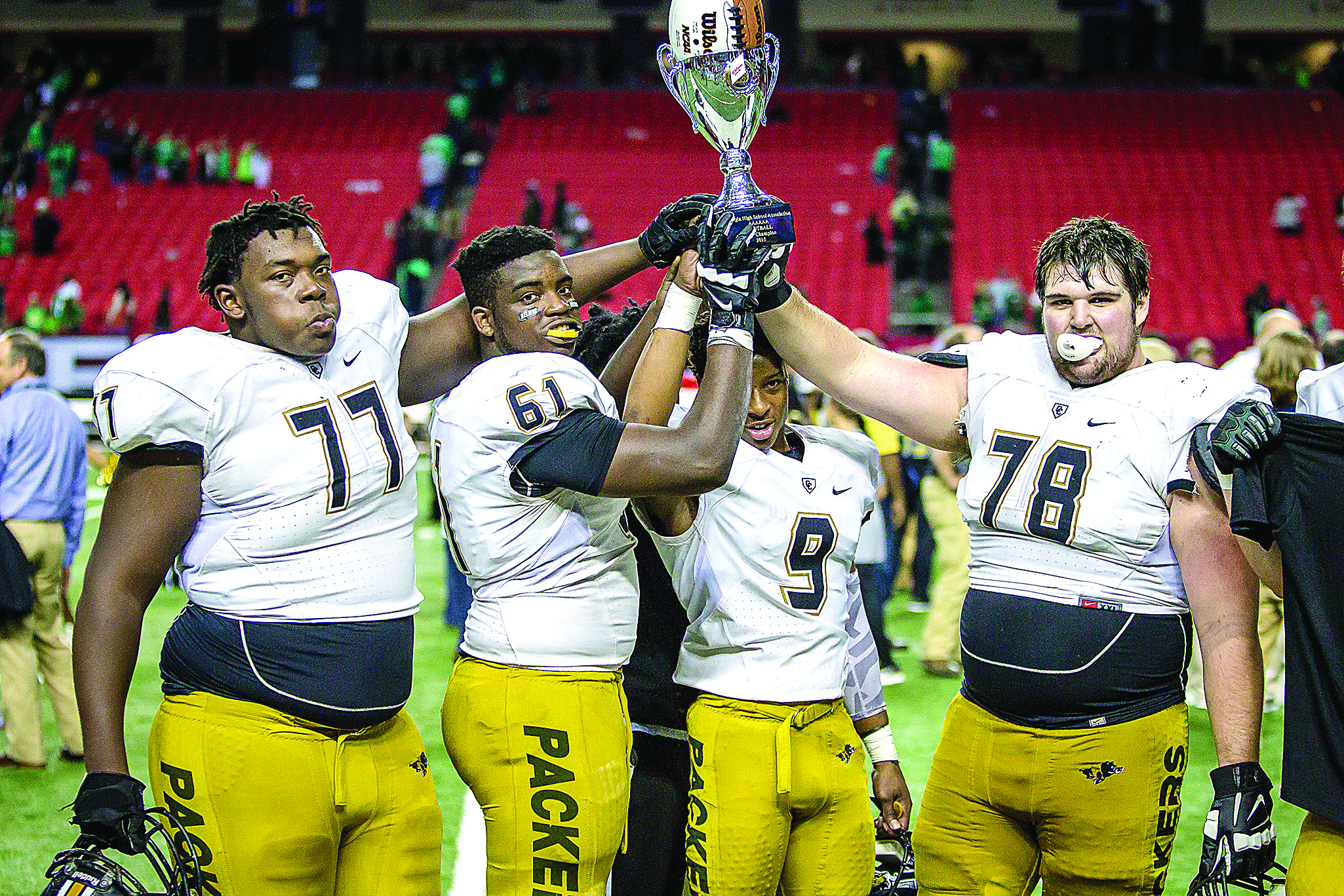Multiple agencies participate
in active shooter exercise
Published 11:59 am Tuesday, July 15, 2025

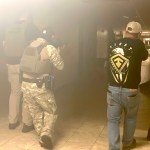
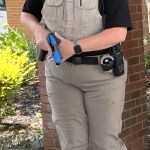

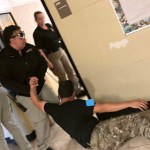
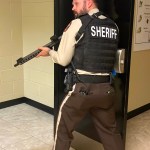
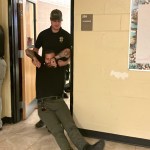
MOULTRIE – The call came in to 911 that there was an active shooter at Stringfellow Elementary School, which set off a course of action involving multiple law enforcement and emergency services agencies in the county. This was how the Advanced Law Enforcement Rapid Response Training (ALERRT) multiple agency exercises began last week.
The Colquitt County Sheriff’s Office hosted the four-day Public Safety Joint Active Killer Training event that also included personnel from the Moultrie Police Department, Emergency Medical Service, Volunteer Fire Association, Moultrie Fire Department and 911.
“Prior preparation prevents poor performance,” said ALERRT Instructor Thomas Moore, summing up the reason for the exercise. “Basically, we want to make the mistakes in training, so, that they’re not made in real life.”
Trending
Moore led the training, which started with classroom instruction dealing with the principles of law enforcement rapid response to an active shooter scenario. He used as examples active shooter incidents that had occurred in the past to illustrate the lessons that were learned from them.
During the classroom instruction, Colquitt County 911 Department Head Theresa Warburg gave participants an idea of what the dispatchers did and how calls were answered when they came into 911.
“This is just from the dispatch side. We’re just trying to prepare ourself on how to act and respond and what it’s gonna be like whenever you have an active shooter,” Warburg said before the training began. “Just kind of get an overall feel of what it’s like on their side, so, we can see what we don’t get to see inside a closed building. This way, we can see what’s going on, on the outside.”
Emergency Management Agency Deputy Director Dustin Hart, who is also president of the Volunteer Firefighters Association, gave instruction on what EMS and firefighters’ protocols were during an active shooter situation.
“Training together for mass casualty events is critical for fire, EMS, and law enforcement agencies to ensure a coordinated, efficient, and life-saving response during high-risk, high-stress incidents. Joint training fosters clear communication, role clarity, and unified command, which are essential to minimizing chaos and confusion at the scene,” said Hart. “Understanding each agency’s capabilities, limitations, and responsibilities allows responders to work seamlessly under the Incident Command System (ICS), saving valuable time and lives.”
“In a crisis event, seconds count and teamwork saves lives. When first responders train together, we are preparing to work together as a team to unite our strengths and skill sets to protect our communities,” said Colquitt County EMS Director Amy Williams.
Trending
Moore told the class at the beginning that they weren’t just preparing for an active shooter in a school.
“It’s any kind of active attack that turns into a mass casualty incident. That’s what we’re trying to prepare for. That’s what we’re trying to figure out as a team,” he said. “Fashion some realistic goals for everybody in this room: Law enforcement, Dispatch, Fire and EMS.”
Then he presented and outlined the “realistic goals for public safety” during a mass casualty incident as:
• Stop the attack as quickly and efficiently as possible.
• Rescue as many of the victims as possible through proper evaluation, triage, medical intervention and rapid transport.
• Provide the community a professional, coordinated response that maintains and increases community trust.
“What we’re trying to do, today, is to test our training as individual disciplines in a coordinated way with other disciplines,” he said. “It requires everybody to do their job. It requires everybody to have a basic understanding of the goals of the other public safety disciplines.”
He told them he would start out by briefly telling them what the law enforcement response was and then Hart would tell them how EMS and Fire responded.
“Anywhere that we see there might be a conflict, we wanna iron it out in training first,” Moore said. “It’s also gonna require some mutual trust and professional cooperation.”
He said he was a firm believer in none of them were as smart as all of them. He said they could work and figure it out together.
“The lessons that we learn are written on the gravestones of others,” he told them was his favorite quote.
During Moore’s presentation, he recapped several shooting incidents that had happened in the past including Columbine High School, Virginia Tech, the Las Vegas Harvest Music Festival and Robb Elementary School in Uvalde, Texas. He talked about the lessons that law enforcement agencies learned from each of the active shooter incidents.
“We do a really good job of running in and shooting that guy,” he said. “Bad guy down. High-fives all around. That part takes us a few minutes. The next six hours of getting this mess cleaned up, law enforcement as a community isn’t doing a phenomenal job of it. That’s the focus of this training.”
He said once they get in and the bad guy is down, they still have a lot of people injured who need a higher level of care and if they don’t get them to that or get the higher level of care to them, more people will be dying than injured.
Then, Moore went through, in detail, what needed to occur from the beginning to the end of an active shooting incident on the law enforcement side.
He turned it over to Warburg and she told them that a lot of what she was going to cover was what the dispatchers experienced in the day-to-day operations of 911.
“I want to start off by letting you understand what it’s like behind the headset,” she said.
She went on to explain that the officer’s radio was what they hear in their headsets but whenever they answered the telephone, the 911 caller was in their headset. Then, the officer’s traffic was coming through the speaker that was down on their console.
“If phones are ringing, then that’s gonna muffle that speaker and we’re having to do what we call ’split ear.’ Listen with this ear what you guys are saying compared to what our caller is saying,” she said. “And trying to relate to you what our caller is saying until your response.”
She said during an incident such as they were training for, E911’s phones were going to start ringing the moment the first shots go off. She said, right now, just like every department, they were short of staff. She said she needed four people to man all of the radios because one person was having to work Moultrie Fire Department, EMS, County Fire, Berlin, Doerun and Norman Park as well as answer the telephone.
She said, when the phones started ringing, the dispatchers were going to try to get what information they could as soon as they could and get the units out to the incident.
“Another problem that we have often. Don’t call dispatch and ask them what’s going on. We hear all the time, ‘I couldn’t get out on the radio.’ When you can’t get out on the radio, I probably don’t have time to talk to you either. So listen to what’s going on,” Warburg said.
She said when there was a shooting a few years ago in Moultrie, everyone was calling them to wanting to know what was going on including off-duty officers, higher personnel, and investigations. She said that tied up the dispatchers.
“Like he said, just respond. … Don’t call us and ask what we’ve got going on,” she said.
Warburg also told them to talk loudly and clear and don’t put their mic too close to their mouth or too far away because it muffled what they were saying. She said that way dispatch doesn’t have to ask them to repeat their information.
“If they ask you again and you don’t repeat it, then, I mean, I hope you’re okay because we don’t know where you’re at or who you’re out with,” she said.
She said, all across the county, the radios weren’t very good, so they get a lot of static sometimes. She said sometimes they get the first part of the transmission but not the rest of it.
She said the bottom line for her was if they have an active shooter incident, they were going to be very busy in dispatch as they try to do everything they could to get everyone going and getting resources.
She asked if any of her dispatchers had anything that they wanted to add and one dispatcher said, “Your safety is our priority and if all we hear is muffled and nothing, we can’t keep you safe. We don’t know where you are. We don’t know where to send help to.”
Moore added that communication was the most important thing in any tactical operation and communication was the first thing to break down in any tactical operation.
When Hart got up and spoke to the class, he said, his focus would be on triage, the operations from EMS and Fire standpoint and incident command from EMS and Fire standpoint.
“Continuous training in MCI (mass casualty incidents) scenarios is equally vital. These rare but devastating incidents require rapid triage, resource management, and critical decision-making under pressure. Ongoing education and realistic exercises help responders maintain their readiness, improve interagency coordination, and adapt to evolving threats such as active shooters, large-scale accidents, and natural disasters. Repetition builds muscle memory and confidence—two key elements in ensuring that responders perform effectively when lives are on the line,” said Hart.
He started out by asking the class who the overall incident commander was and individuals responded “law enforcement.”
“Law enforcement is the incident commander of everything. They call all the shots. Now who is that law enforcement officer? Who’s it gonna be? Is it gonna be the Chief of Police? Is it gonna be the Sheriff?” he asked the class.
Individuals responded that it would be the first officer on scene and Hart added the person with the most knowledge of the situation.
Hart asked them if once the active threat was eliminated who would the incident command be transferred to and the response was EMS. He then talked about what they did when they took command of the incident.
“EMS and Fire, depending on how you’re gonna work that system. You’re gonna have that transfer of command,” he said.
Hart told them that EMS’s role during an active shooter incident was to provide life-saving care, coordinate with law enforcement for scene safety, rapid triage and treatment of casualties and transport patients from casualty collection points to treatment facilities.
He said, with EMS, there was a new standard where they were now told in training they may go into the “hot zone.” He clarified that their definitions of the zones was different than law enforcement definitions. He said what the officers needed to know was that EMS knew it was unsafe and the threat was still active.
“We’re willing, we’re trained to come in here and start triaging. We might not start moving yet but we’re willing to come in here and start triaging and treat those critically ill that we can, as long as you’re there to protect,” Hart said.
He, then, went over the chain of command from the EMS perspective, which was the incident commander, operations, triage officer and transport officer.
“So, we’re setting up out in the ‘warm zone’ or ‘cold zone’, wherever we’ve decided to set-up at. We’re setting up our own internal command, amongst ourselves, to get a game plan ready to go in,” he said.
He said that the moving of patients was going to be the fire department’s responsibility. He said they would pick-up the victims and move them outside to the casualty staging area.
Then, he said, the triage officer would communicate with the transport officer to get the patients sent to the correct hospital to address their individual needs.
“We’re gonna rely on law enforcement to keep us safe or keep the perimeter safe, as well,” Hart said.
After classroom instruction on Tuesday, an active shooter scenario was staged and executed at the elementary school for the participants to practice what they had learned in class and in earlier training.
“The schools system has been awesome about letting us do this,” Moore said about using the school for the training.
“We are grateful for our partnership with the Moultrie Police Department and the Colquitt County Sheriff’s Office in maintaining safe and secure schools. We appreciate their efforts to stay trained and prepared should there be a need for rapid response in an emergency, and are happy to provide training space for such preparation,” stated the Colquitt County School District in reference to the training taking place at Stringfellow Elementary School.
There were 15 community volunteers, including members of Moultrie Federated Guild, who acted as victims of the “active shooter” during the exercise. Some of them were made-up with fake gunshot wounds. The volunteers were assigned different roles during the scenario.
“I think it’s good information. I do like that, as a spectator. … if it was a live shooting, we would know exactly what to do and just to see the quick response,” said Ora Coots, who volunteered.
Jamie Lowry, another volunteer, said, “It was an experience to see how all the officials walked together and worked together and the way that they handled the situation.”
“I think it’s sad to know that we have to do this today but I think that it’s great, that from an EMS point, all the first responders are preparing for if something bad really happened,” said volunteer Amber Gay.
After the exercise Hart said, “During the recent four-day training exercise, we had the opportunity to network with agencies, fostering mutual understanding among public safety officers. This exercise not only enhanced our knowledge but also strengthened friendships, leading to increased trust among first responders. By identifying our strengths and weaknesses, we were able to address them promptly, ultimately improving our skills and preparedness.”











